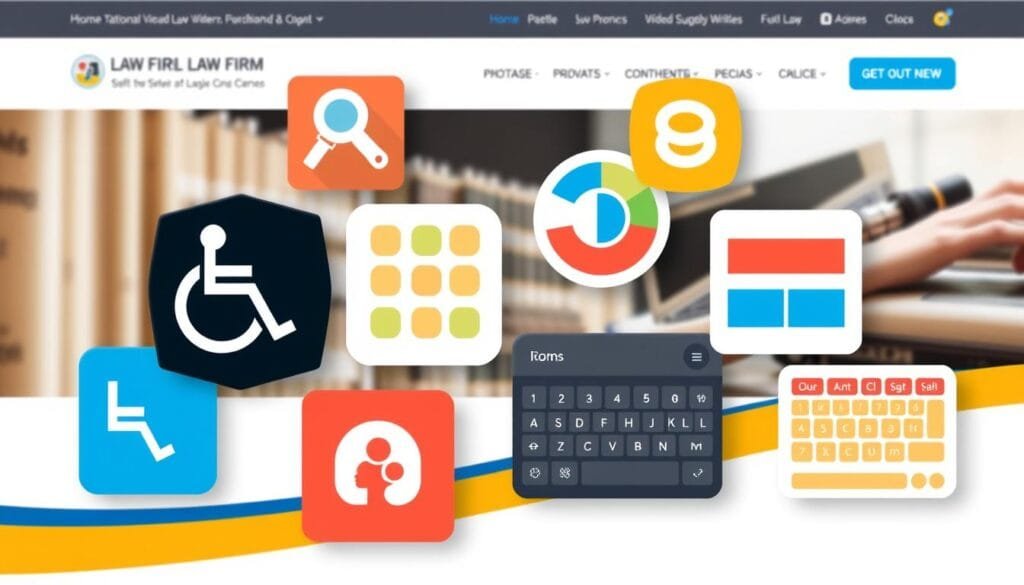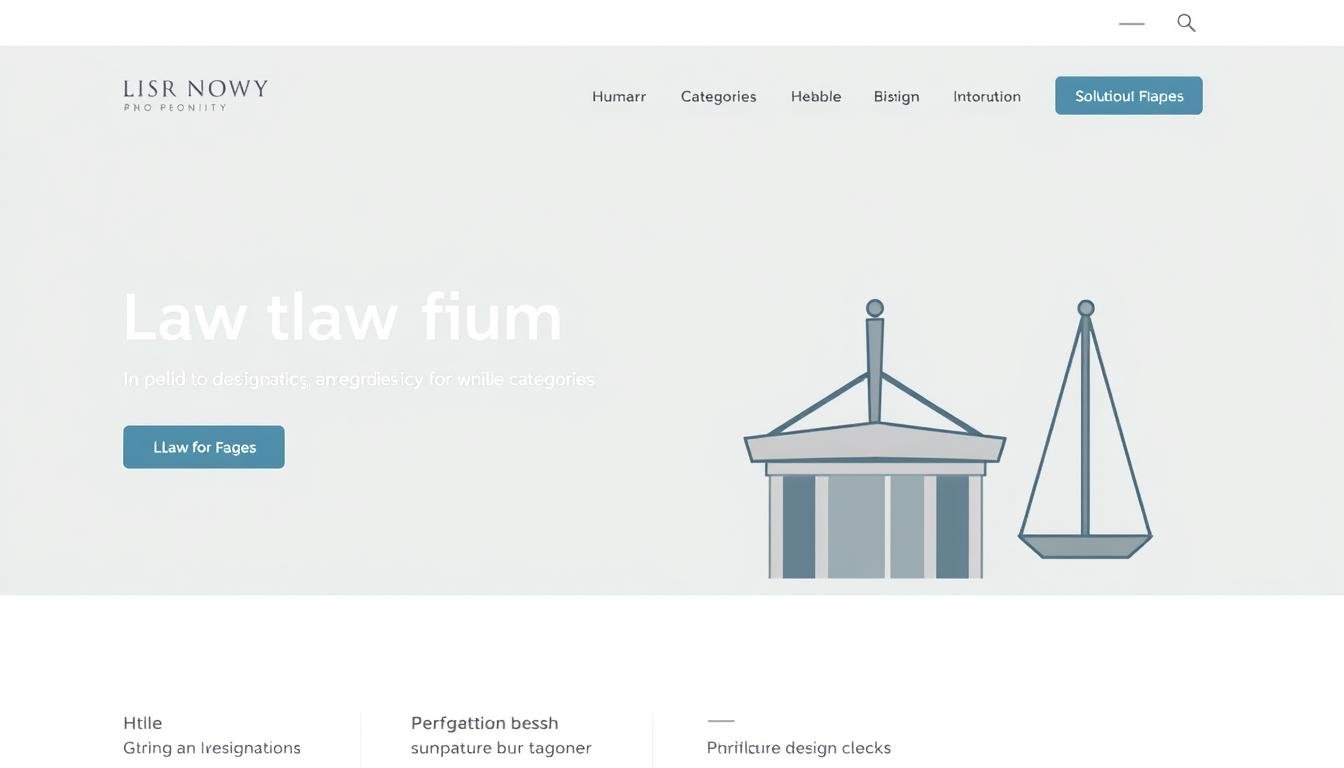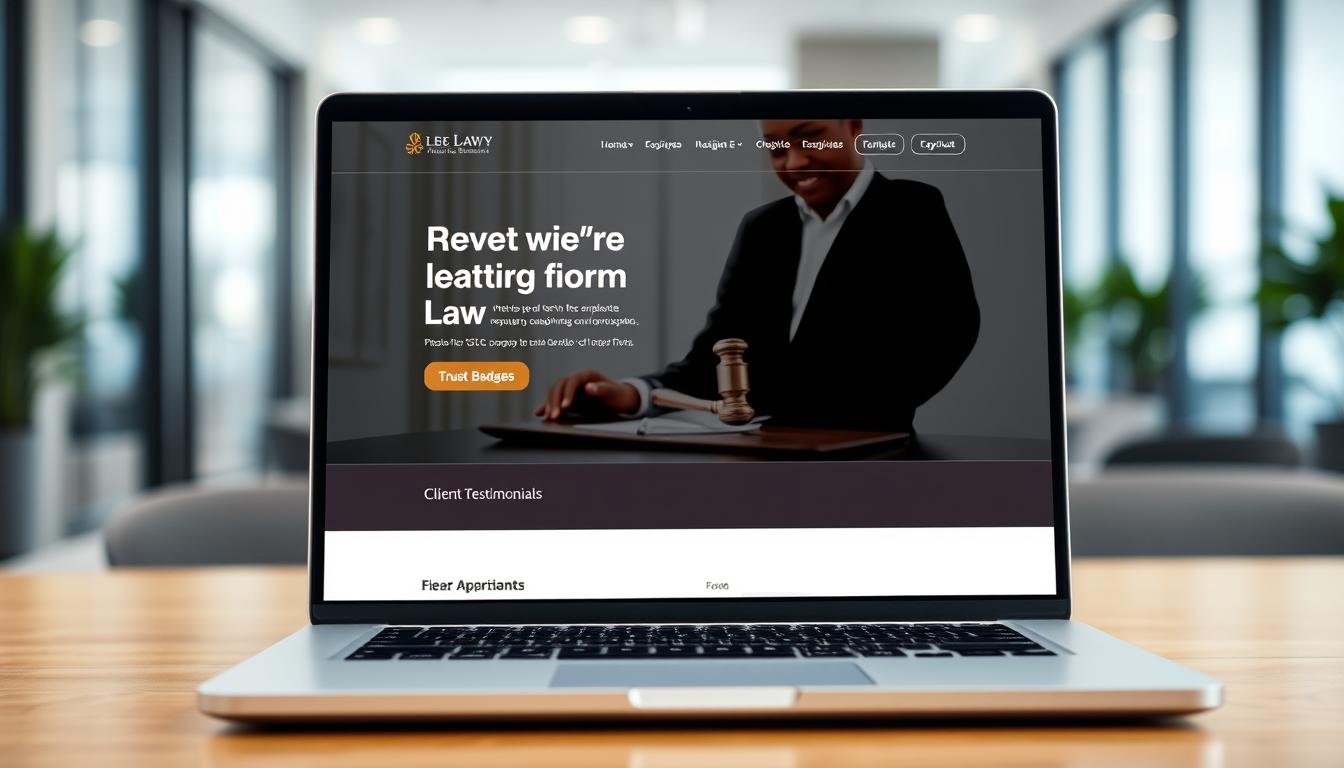Did you know 20% of the U.S. population has a disability? This shows how important web accessibility is for law firms. At Law Webber, we focus on making our sites accessible to everyone. This isn’t just a rule; it’s a key part of serving our clients well.
By 2021, over 30% of law firms faced legal action for not following website accessibility rules. This highlights the legal dangers of not following these rules. Not following these standards can cost a law firm $50,000 or more in lawsuits and settlements.
Law firms that follow ADA rules for their websites not only avoid legal trouble. They also make their sites better for everyone. By focusing on making our sites accessible, we show we care about all our clients, including those with disabilities.
In this article, we’ll share tips to make your law firm’s website more accessible. We want to make sure everyone can use your site, no matter their abilities. Let’s work together to make your website welcoming to all.
Key Takeaways
- Web accessibility is essential for engaging all possible clients.
- ADA compliance reduces financial risks from legal actions.
- Using WCAG standards makes websites easier to use.
- Accessible websites can increase user engagement by 25%.
- Regular accessibility checks are key for following rules and keeping users happy.
- Good color contrast is important for easy reading and a better user experience.
Understanding Web Accessibility and Its Importance
Web accessibility means making websites easy for everyone to use, including those with disabilities. It aims to remove barriers that stop people from using web content well. By following web accessibility tips, law firms can be more inclusive and meet legal standards.
Definition of Web Accessibility
Web accessibility helps people with different disabilities use websites. The Americans with Disabilities Act (ADA) requires law firms to have accessible digital platforms. A legal website ADA compliance checklist can help firms meet these requirements.
Why Accessibility Matters for Law Firms
Accessibility is very important for law firms. About 61 million people in the U.S. have disabilities, and 60 million seniors face similar challenges. These groups have a lot of spending power, over $2 trillion. Law firms that ignore these needs miss out on big opportunities.
Legal Implications of Accessibility
Not following ADA rules for websites can lead to legal trouble. In 2022, over 3,255 federal lawsuits were filed about web accessibility. Law firms must understand these risks and take steps to ensure ADA compliance. This helps them avoid legal issues and grow their market presence.

Key Web Accessibility Guidelines to Follow
Web accessibility is key for law firms to meet regulations and serve all clients equally. Following important guidelines improves user experience and legal compliance. Knowing the essential frameworks and practices is vital for achieving website accessibility standards for law firms.
Introduction to WCAG (Web Content Accessibility Guidelines)
The Web Content Accessibility Guidelines (WCAG) are a global standard for making websites more accessible. They were updated to version 2.1 and focus on four main principles:
- Perceivable – Content must be presented in ways that all users can perceive.
- Operable – Functionality should be accessible through various means, including keyboard navigation.
- Understandable – Information should be clear and comprehensible.
- Robust – Content should remain accessible as technologies evolve.
Following these guidelines is essential for law firms to serve users with disabilities. It ensures they meet the legal protections of the ADA.
Understanding ARIA (Accessible Rich Internet Applications)
ARIA roles and attributes make web applications more accessible, helping users with screen readers. By using ARIA, the semantic meaning in HTML is improved. This makes content more accessible for those with impairments, meeting key web accessibility guidelines.
Importance of Alt Text for Images
Adding descriptive alt text to all images is critical for accessibility. Alt text helps screen reader users understand the purpose of images. This practice is essential for law firms to meet website accessibility standards and improve user experience for screen reader users.

Practical Web Accessibility Tips for Law Firm Sites
Making your lawyer website accessible is key to a welcoming online space. Following accessibility principles in law firm web design ensures you meet legal standards. It also improves the experience for all visitors, including those with disabilities. Here are some effective strategies to promote accessibility.
Using Clear and Simple Language
Clear language is the foundation of accessibility. Using simple words helps everyone, even those who struggle with legal jargon. This makes legal content easier to understand and interact with.
By simplifying language, you make your site more approachable. This is not just good for accessibility; it’s essential for ensuring your site meets ADA standards.
Designing for Keyboard Navigation
Accessible navigation is vital for users with motor disabilities who use keyboards. A good website should work fully with keyboard shortcuts. This makes your site accessible to a large part of the population who might find mouse-only interfaces hard to use.
Ensuring Color Contrast and Readability
Visual accessibility is critical for a good user experience. Good color contrast between text and background makes reading easier. It’s important to choose colors that meet ADA standards.
This not only helps those with visual impairments but also makes your site more appealing. It builds trust and credibility with all users.
Avoiding Auto-Playing Multimedia Content
Auto-playing multimedia can be a problem, affecting those with hearing or cognitive disabilities. It’s best to let users control when to play audio and video. This aligns with accessibility principles and improves user satisfaction.

| Accessibility Feature | Benefits | At-Risk Population |
|---|---|---|
| Clear Language | Improves user understanding and engagement | Cognitive disabilities (15-20% of users) |
| Keyboard Navigation | Allows access for motor disabilities | Approximately 5% of the population |
| Color Contrast | Enhances readability for visually impaired users | Up to 19% of the U.S. population |
| No Auto-Play | Gives control to users; minimizes disruptions | Auditory impairments |
Tools and Resources for Enhancing Web Accessibility
Improving your law firm’s website accessibility is more than just following rules. It’s about making your online space welcoming to everyone. We can use many tools and resources to make our site more accessible. This way, we ensure everyone can use our website, meeting legal standards and reaching more people.
Recommended Accessibility Evaluation Tools
Tools like Google Lighthouse, WAVE, and Axe are key for law firms wanting to improve their site’s accessibility. These tools help us find and fix issues that might make our site hard to use. By using these tools, we can make our site better for everyone, meeting the needs of all our clients.
Resources for Staying Updated on Accessibility Guidelines
The rules for web accessibility keep changing. To stay ahead, we need to keep up with the latest guidelines. We can do this by reading industry news, government updates, and resources from disability rights groups. This helps us know what changes we need to make to our site.
Getting Professional Help from Law Webber
At times, getting help from experts is the smartest move. Working with Law Webber means we get help with accessibility rules. They help us check our site and make it better for everyone. This not only keeps us safe from legal trouble but also shows we care about serving all our clients.





